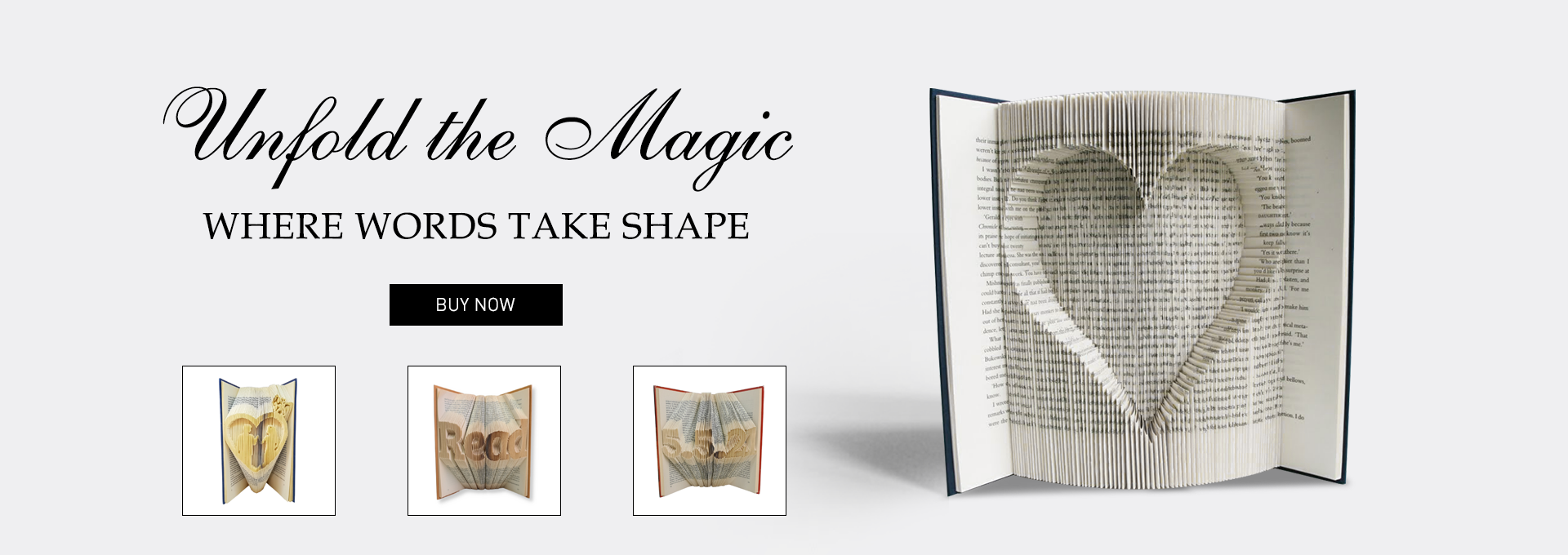Turning Pages into Art: The Magical World of Book Folding
Book folding is a captivating art form that transforms ordinary books into stunning displays of creativity. It melds the worlds of literature and artistry, inviting people to see books not just as vessels of written words but as materials for imaginative expression. Each fold adds a layer of depth and form, unveiling intricate designs that can evoke emotions and tell stories without uttering a single word.
As we delve into the magical world of book folding, we discover a realm where craftsmanship meets personal expression. From simple geometric patterns to elaborate visual designs, the possibilities are endless. Whether creating a heartfelt gift or embellishing a living space, the act of folding pages into art allows individuals to celebrate both the beauty of books and their own artistic flair.
History of Book Folding
Book folding has roots that stretch back several centuries, with the earliest instances likely emerging in the late 19th century. Initially, this art form was a project born out of necessity, as individuals sought ways to repurpose old or damaged books. As http://www.bookfolding.store/ became more accessible, creative enthusiasts began experimenting with the techniques of folding and cutting pages, transforming forgotten texts into visually stunning pieces of art.
Over time, book folding evolved from a practical solution into a celebrated craft. The 20th century saw a resurgence of interest in handmade crafts, and book folding became a popular activity among crafters and artists. Workshops and tutorials began to emerge, allowing individuals to learn this intricate technique. Artists started to create complex designs, incorporating symbols and imagery that conveyed deeper meanings and personal stories.
In recent years, the digital age has introduced new possibilities for book folding, with online communities sharing patterns, ideas, and innovations. Social media platforms have played a crucial role in inspiring a new generation of book folders, leading to a revival of this enchanting art form. Today, book folding is not only a creative pursuit but also a way to celebrate literature and the stories contained within the pages of books.
Techniques and Tools
To embark on the journey of book folding, it is essential to familiarize yourself with various techniques. One popular method is the single-page folding technique, where individual pages are folded to create unique designs. This technique allows for intricate patterns that can be both simple and complex, catering to different skill levels. Another approach is the multi-page folding technique, which involves folding multiple pages at once to produce cohesive designs that reveal a word or an image when viewed from a distance. Mastering these folding methods opens up a world of creative possibilities for artists.
The tools required for book folding are relatively simple, making this craft accessible to many. An essential tool is a ruler, which helps ensure that folds are precise and uniform. A bone folder is also crucial for making crisp folds, giving your finished design a polished appearance. Additionally, a pencil is necessary for marking the fold lines on the pages, ensuring accuracy in your design. Many book folders also find that having a cutting mat or board provides a dedicated workspace while protecting surfaces during their creative process.
In addition to these basic tools, some artists choose to use digital tools for planning their designs. Software programs can help create patterns and templates, allowing for more intricate and planned designs. As you develop your skills in book folding, you might also explore using decorative elements such as colored paper or embellishments to enhance your creations. With the right combination of techniques and tools, book folding transforms ordinary books into stunning art pieces.
Creating Your Own Book Folding Art
Creating your own book folding art is a rewarding and enjoyable process that allows you to transform ordinary books into unique pieces of decor. To start, select a book that you are comfortable repurposing. It can be one that holds sentimental value, or simply a volume you no longer need. The size and thickness of the book will determine the complexity of the designs you can create. There are countless templates available online that guide you through the folding process, from simple shapes to intricate patterns.
Once you have your book and template, gather the necessary tools: a ruler, a pencil, and a craft knife or scissors for trimming any pages if needed. It helps to practice your folding technique on a few spare pages first. Begin by marking each fold according to the template, ensuring that your measurements are precise. The key to beautiful book folding art lies in clean and accurate folds, so take your time to align each page carefully.
After you have completed the folds, it’s time to display your masterpiece. Consider adding decorative elements such as ribbons, lights, or flowers to enhance the overall presentation. You can place your folded book art on a shelf, a mantel, or even use it as a centerpiece for gatherings. Sharing your creation with friends or family can also inspire them to explore the creative world of book folding. The journey from an ordinary book to a stunning work of art is truly magical, inviting you to embrace your creativity and enjoy the satisfaction of making something beautifully unique.
